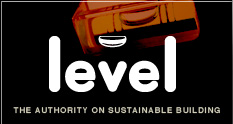Water
Water use, sustainability, and efficiency by choosing quality systems and materials, and providing environmentally friendly solutions.
Pipe materials
Pipes must not contaminate water, and must be suitable for the pressure, flow and temperature of the water they are carrying.
On this page:
- what to consider
- copper
- polybutylene (PB)
- polyethylene (PE or HDPE)
- polypropylene (PP)
- cross-linked polyethylene (PEX)
- unplasticised polyvinylchloride (uPVC or PVC-U)
All of these are acceptable materials for water supply pipes.
Also see:
- hot water pipes for requirements specific to hot water pipes
- pipe jointing systems for details of jointing systems suitable for each type of pipe material.
The acceptable solution G12/AS1 requires that “components of the water supply system shall not contaminate potable water” (clause 2.1.1). Table 1 lists pipe materials for hot and cold water, and clause 2.1.2 states “Non-metallic components complying with BS 6920 or AS/NZS 4020 materials complying with Table 1 shall be acceptable.
What to consider
Pipe materials and components must not contaminate potable water. They must also be:
- suitable for the expected temperatures and pressures
- compatible with the water supply, to minimise the potential for electrolytic corrosion
- suitable for the ground conditions (if used underground) to minimise the potential for corrosion of the exterior of the pipe
- suitable for the local climate (if used outdoors) such as freezing conditions or atmospheric salt or sulphur
- able to withstand UV effects (if used outdoors).
So, when selecting of materials for water supply pipes, consider water pressure, water temperature, compatibility with water supply, durability, support, ease of installation, and cost.
Also take account of sustainability considerations such as embodied energy. See material use for more.
Copper
Copper has long been used for all types of domestic water services and distribution because it:
- is durable
- has good corrosion resistance
- is malleable and easy to bend
- is self-supporting
- has good flow characteristics
- requires few fittings
- can be recycled.
Copper may be annealed (i.e. heated, then cooled slowly) which improves its properties, for example making it less brittle and stronger.
Although copper in general has good corrosion resistance, this depends on the environment. Acidic conditions, either from the soil (if buried) or from the water, can cause corrosion, so local pH levels should be checked before using copper pipes.
Polybutylene (PB)
Polybutylene is a plastic material that was introduced in the late 1970s and used extensively for water supply pipes until the mid 1990s. Unfortunately, one brand of polybutylene gained a reputation for failure, resulting in a significant drop in use.
Polybutylene has excellent properties for use as water supply pipework, including:
- low cost
- flexibility
- ease of installation
- ability to be used for both hot and cold water services
- frost resistance.
In outdoor situations, it must be protected from UV exposure.
Polyethylene (PE or HDPE)
High density polyethylene (often called alkathene or polythene) has been used since the early 1960s. It is suitable for both potable water and wastewater services but it can only be used for cold water supply.
It is the most commonly used plastic pipe for supplying the mains water to a dwelling. Polyethylene:
- is durable
- is corrosion resistant
- has good flow characteristics
- is lightweight and flexible
- is easy to install
- has a good bending radius
- is inexpensive
- requires few fittings.
Polypropylene (PP)
There are three types of polypropylene:
- P-H has good mechanical properties and excellent chemical resistance for use as industrial and sewerage waste pipes systems
- PP-R has good resistance to high internal pressure so it is suitable for domestic pressure water supply systems and both hot and cold water services
- PP-B is suitable for buried sewerage and wastewater drainage as it has good impact strength, particularly at low temperatures, and excellent chemical resistance.
The use of polypropylene has been increasing since the late 90s as it is:
- chemical and corrosion resistant
- heat resistant
- lightweight
- easy to install
- frost resistant.
In outdoor situations, it must be protected from UV exposure.
Cross-linked polyethylene (PEX)
PEX tubing is made from a cross-linked, high density polyethylene polymer, which results in a stronger material that polyethylene. Properties include:
- more durability under extremes of temperature and chemical attack
- greater resistance to cold temperatures, cracking and brittleness on impact
- it can be used for hot water supply and hydronic heating systems, as well as potable water supplies
- flexibility
- ease of installation
- it can be used for indoor and buried outdoor situations.
PEX is not recommended for outdoor above ground use – although it can withstand some UV exposure, this should not exceed the manufacturer’s instructions.
Unplasticised polyvinylchloride (uPVC or PVC-U)
The plastic uPVC has been used extensively in New Zealand since the 1960s. Today in domestic construction it is used chiefly for drains, wastes and vents, and is rare for water supply in new individual houses. The primary jointing method for uPVC is solvent welding, where solvents soften the surfaces of the material, which then chemically fuse together. A rubber ring (elastomeric seal) joint system is also available. This piping:
- is inexpensive
- is easy to handle
- has low resistance to flow.
Updated: 12 September 2016

